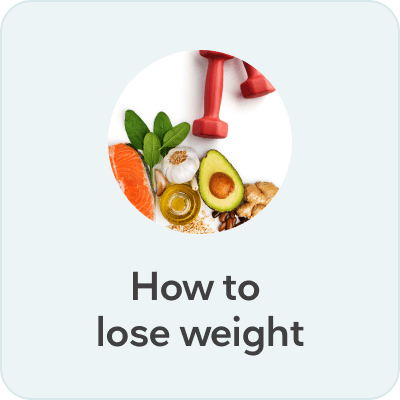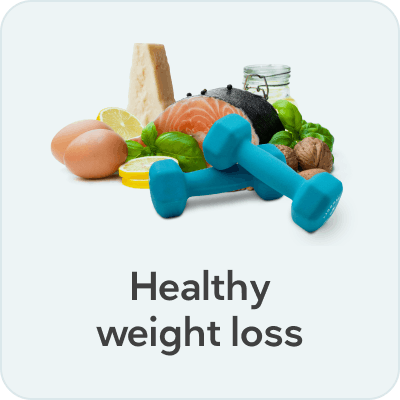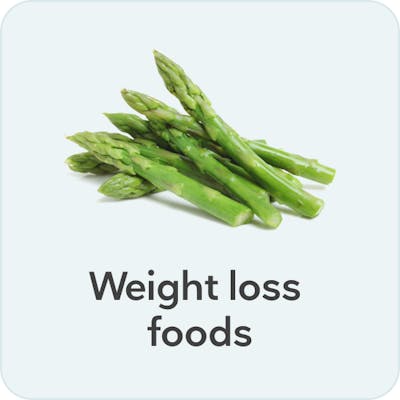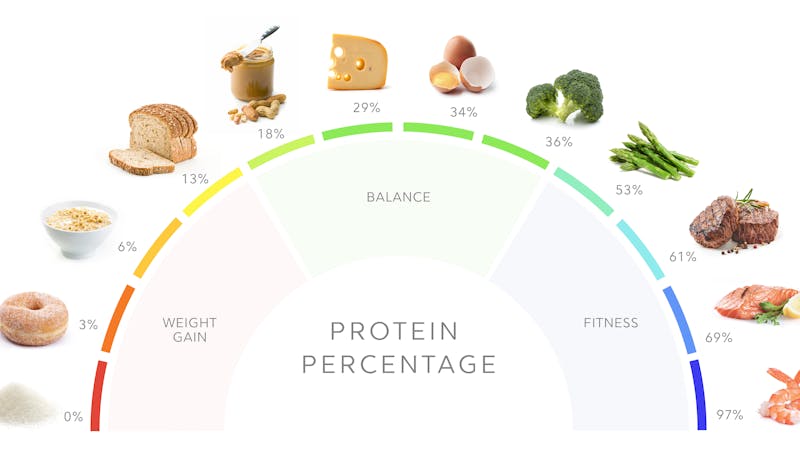The 15 best healthy snacks for weight loss
Key takeaways
Is snacking good for weight loss? Whether snacking is helpful or harmful for losing weight depends on several factors. Learn moreWhat is a healthy weight loss snack? Healthy weight loss snacks tame hunger and provide protein and other essential nutrients for very few calories. Learn more
The 15 best snacks for healthy weight loss Greek yogurt, zero-sugar jerky, edamame, and many other foods are excellent snack options. See the complete list
Evidence based
Is eating a snack a good strategy for healthy weight loss? The truth is that it can be helpful for some but not for others. What you snack on also matters — a lot. We believe the best snacks provide plenty of protein per calorie, fit the diet you follow, and work with your lifestyle.
In this guide, we’ll let you know how to make smart snack choices. Plus, we’ll share the foods we think are the 15 best healthy snacks for weight loss.
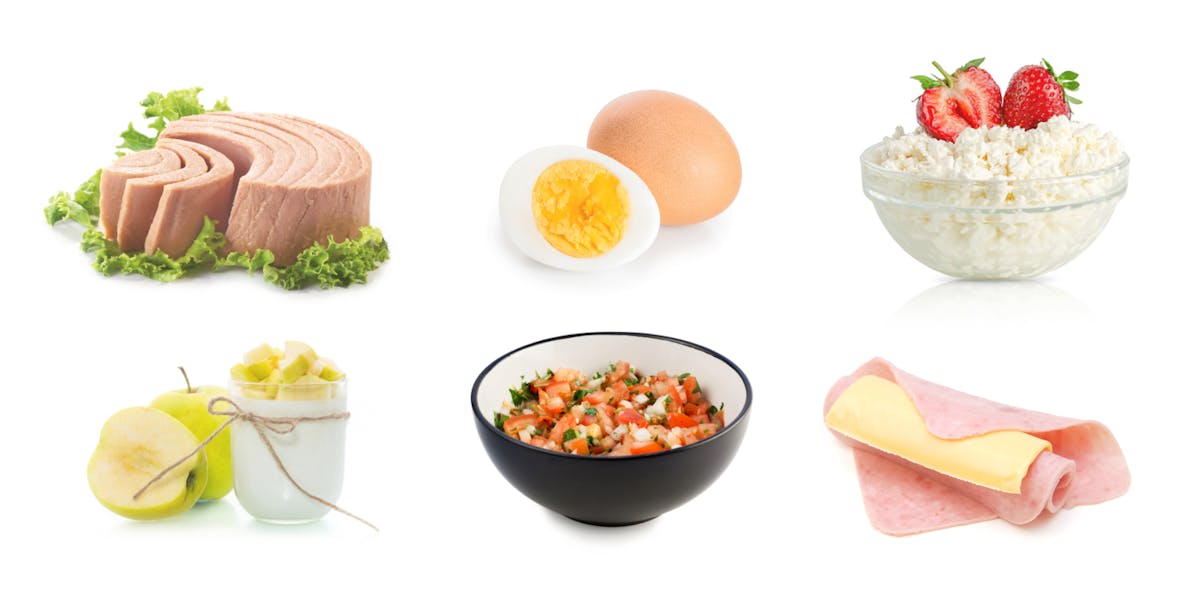

15 healthy snacks for weight loss
- Plain Greek yogurt
- Turkey pepperoni
- Black beans with salsa
- Smoked salmon
- Dry-roasted edamame
- Cottage cheese with berries
- Seitan (vital wheat gluten)
- Turkey and cheese roll-ups
- Hard-boiled eggs
- Canned tuna
- Zero-sugar beef jerky
- Tempeh
- Cheese with cucumber slices
- Nonfat Greek yogurt with chopped apple
- Lupini beans
Is snacking beneficial for weight loss?
Research on how snacking affects weight loss is mixed. While several studies suggest that people lose similar amounts of weight whether they snack or not, one trial found that eating two large meals a day was more effective than eating several small meals daily.1 On the other hand, eating protein-based snacks was found to provide a weight loss edge in some trials.2
Snacking’s impact on weight loss can vary among individuals. Some people may be more successful when eating smaller meals with a snack or two, while others may do better if they eat two or three larger meals without any snacks.
How do you know which approach applies to you?
Having a healthy snack can be a smart move if you get hungry between meals — especially if your last meal was low in protein or calories and your next one is a few hours away.
Depending on your diet and how active you are, you may even get hungry between meals that contain adequate protein and calories. Therefore, a healthy snack may keep you on track and prevent unhealthy snacking or overeating at the next meal.
However, many people snack for reasons other than hunger, such as habit.3 If you’re accustomed to having a snack at a certain time every day, you may reach for it even though you’re not truly hungry.
Other common reasons for non-hunger-related snacking include boredom, anxiety, and the wide availability of tempting snack foods.
The bottom line? While snacking can be helpful under certain circumstances, it isn’t necessary. If you’re not hungry between meals, don’t snack.
Choosing snacks for healthy weight loss
How can you select the best snacks for weight loss? Choose healthy weight loss foods, which minimize calories while maximizing nutrition and satiety, which is the feeling of being comfortably full and satisfied. These foods share some common features, including:
- High protein percentage: Foods that promote healthy weight loss get a high percentage of their calories from protein. This nutrient supplies the essential amino acids your body needs to maintain muscle and perform many other important functions.4 Studies show that getting plenty of protein can also help you feel full, keep your metabolism up, and lose body fat.5 A food’s protein percentage tells you how much of its calories come from protein instead of fat and carbs.6 To lose weight in a healthy way, we recommend that you mainly eat foods — including snacks — that provide plenty of protein per calorie.
-
Low energy density: “Energy density” refers to the calories (or energy) in a specific weight of food. It is typically expressed as the number of calories per gram of food (calories/gram). The lower the number, the fewer calories a given amount of food contains.
A food’s energy density is based on its protein, carbohydrate, fat, water, and fiber content. Foods containing a lot of water or fiber have lower energy densities than those with less water and more fat.
This is because protein and carbs each provide 4 calories per gram, fat provides 9 calories per gram, water provides zero calories per gram, and fiber is estimated to provide less than 1 calorie per gram.7 Examples of foods with very low energy densities are above-ground vegetables and low-sugar fruit.
According to studies, when people eat mostly foods with low energy densities, they often naturally take in fewer calories than they do when they eat mostly high energy density foods.8
- High in fiber: Studies suggest that fiber — the non-digestible portion of carbs found in plants — can help people feel full, eat less, and absorb slightly fewer calories from mixed meals.9
These trials tested fiber’s effects in people who were eating standard (higher carb) diets. So, whether keto and low-carb eaters will also experience these potential benefits is unclear. However, because fiber is bulky and stretches the stomach, it may help you feel fuller short-term, no matter what diet you follow.
When selecting snacks, it’s also important to choose foods that fit the diet you follow, whether it’s low carb, keto, high-protein, vegetarian, vegan, Mediterranean, or any combination of these weight loss approaches.
Finally, the best snacks for healthy weight loss will work with your lifestyle. You might be able to portion out a chilled snack from your fridge at home or heat up something in the microwave at work. But If you have little time to prepare snacks or won’t have access to refrigeration or appliances, you’ll need shelf-stable, grab-and-go options.
No matter what your eating preference and needs, we’ve got you covered with plenty of snacks in the next section!
| Dark green | Light green | Yellow | Orange-red | Red | |
|---|---|---|---|---|---|
| Protein percentage | 51 to100% | 31 to 50% | 21 to 30% | 10 to 20% | Less than 10% |
| Energy density | 0.1 to 1.0 calories/gram | 1.1 to 2.3 calories/gram | 2.4 to 3.5 calories/gram | 3.6 to 5.0 calories/gram | More than 5.0 calories/gram |
For healthy weight loss, choose mostly foods with protein percentages and energy density ranges in the green columns.
The 15 best snacks for healthy weight loss
All of our best healthy weight loss snacks have at least 10 grams of protein and no more than 160 calories per snack-sized serving.
We’ve included each snack’s nutrition information, protein percentage, and energy density.10 Plus, we let you know whether it’s a good fit for your weight loss approach and lifestyle.
In no particular order, here are our 15 best snacks for healthy weight loss.
1. Plain Greek yogurt
Pros: no preparation needed; low in net carbs11 Cons: requires refrigeration
Creamy Greek yogurt is packed with protein, calcium, and other minerals. In some studies, eating more dairy foods has been found to boost weight loss.12
Should you choose nonfat, low-fat, or full-fat dairy products to lose weight? Although non-fat and low-fat Greek yogurts provide more protein for fewer calories, it’s fine to opt for full-fat if you prefer the taste, especially if you eat a low-carb or keto diet.
Enjoy Greek yogurt alone or mixed with a bit of cinnamon, vanilla, and optional sweetener, if you like.
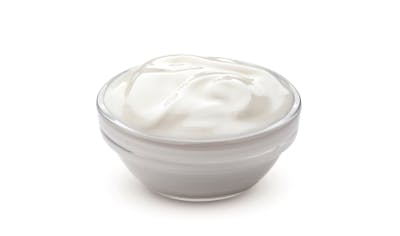

13 grams
3.5 grams
68
77%
0.6
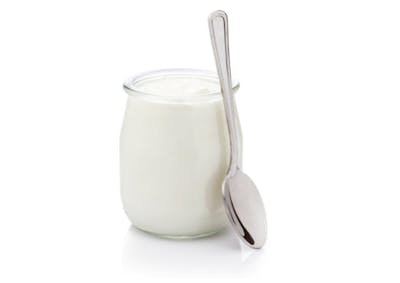

12 grams
3.5 grams
84
57%
0.7
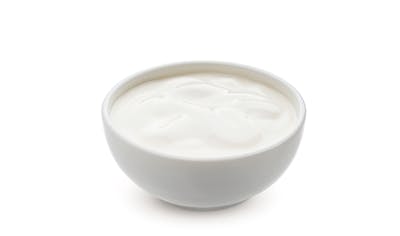

11 grams
3.5 grams
115
38%
1
2. Turkey pepperoni
Pros: carb-free, no preparation needed, no refrigeration needed
Cons: not for vegan and vegetarian diets
Regular pepperoni is a tasty and convenient snack, but its protein percentage is only 20%. For a weight-loss-friendly alternative, go for turkey pepperoni. You’ll get the same zesty flavor as traditional pepperoni with a lot more protein per calorie. And it’s a compact, portable snack you can take anywhere.
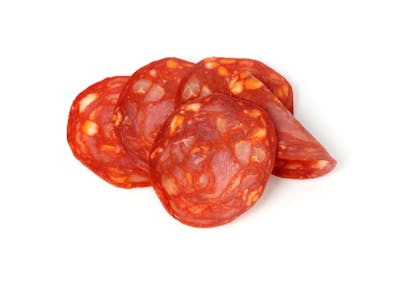

14 grams
0 grams
103
54%
2.3
3. Black beans with salsa
Pros: high in fiber, minimal preparation needed
Cons: too high in net carbs for most low-carb diets; may not agree with people with irritable bowel syndrome (IBS)
Beans and legumes provide protein and fiber that can help you feel full.13 If your eating plan allows more carbs, try black beans and salsa for a high-fiber, plant-based snack with a bit of heat.
It’s a snap to prepare: Simply take ¾ cup of canned black beans and mix with 2 tablespoons of your favorite salsa.


12 grams
19 grams
12 grams
133
36%
0.8
4. Smoked salmon
Pros: carb-free, high in omega-3 fats, no preparation needed
Cons: requires refrigeration; not for vegan or vegetarian diets
Salmon is rich in protein and several vitamins and minerals. Like sardines and other oily fish, salmon is an excellent source of omega-3 fats, which some studies have credited with potential health benefits.14
Smoked salmon is cured in salt for several days, smoked at a low temperature, packaged, and sold ready to eat. It needs to be refrigerated, so choose canned (cooked) salmon instead if you want a shelf-stable snack with the same nutritional profile.
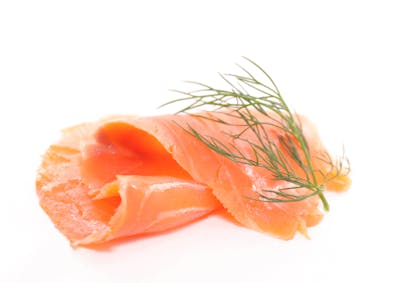

16 grams
0 grams
95
65%
1.1
5. Dry-roasted edamame
Pros: high in fiber, low in net carbs, no preparation needed, no refrigeration needed
Cons: higher energy density than other snacks on this list
Edamame is another name for green soybeans. Unlike most plant proteins, soy is considered to be a complete protein source because it provides all nine essential amino acids in the amounts your body needs.15
During dry roasting, edamame loses a lot of its water. The result is a crunchy snack that’s more concentrated in protein than steamed edamame.
Dry-roasted edamame is usually seasoned with sea salt. If you prefer it spicy, go for a wasabi-flavored version.
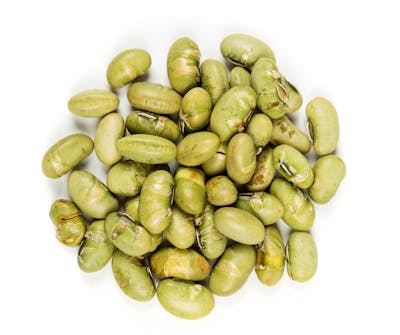

14 grams
3 grams
5 grams
137
40%
4.6
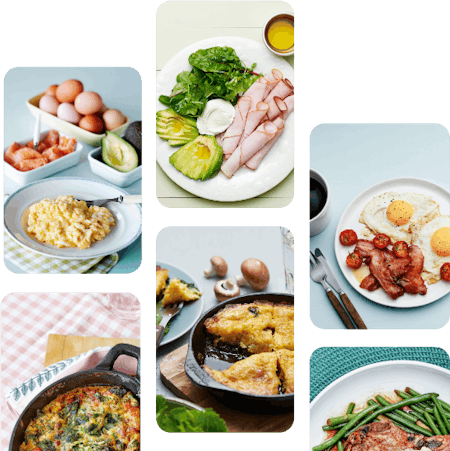
6. Cottage cheese with berries
Pros: high in fiber, low in net carbs, very low energy density, minimal preparation needed
Cons: requires refrigeration
Tangy cottage cheese is made by adding bacteria to milk, which causes casein (a protein) to curdle or form curds. The curds then separate from the whey, resulting in the familiar lumpy texture of this popular dairy food.
Like Greek yogurt, cottage cheese comes in nonfat (0%), low-fat (1% or 2%), and regular or full-fat (4%) versions. Since all types of cottage cheese have high protein percentages and low energy densities, they’re all excellent healthy weight loss options.
While cottage cheese is good on its own, we also like it paired with berries for a bit of sweetness and fiber.
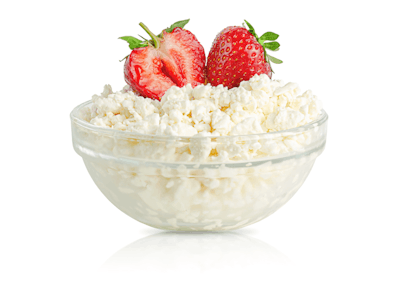

13.5 grams
8 grams
2.5 grams
95
57%
0.6
7. Seitan (vital wheat gluten)
Pros: low in net carbs, very high protein percentage
Cons: requires refrigeration and preparation
Seitan is an excellent protein-rich meat substitute for people who follow a vegan or vegetarian diet. It is made from gluten (a protein) but contains very few carbs, unlike bread and other grain-based products.
People with celiac disease or gluten sensitivity should avoid gluten. But if you tolerate gluten and are looking for a protein-rich plant-based snack, seitan is a good option.
Seitan is typically seasoned with soy sauce and sold at natural markets and some grocery stores. You can find it in the refrigerated section, right next to the tofu. Heat it up on the stove or in the microwave after seasoning with spices, wasabi, or other seasonings.
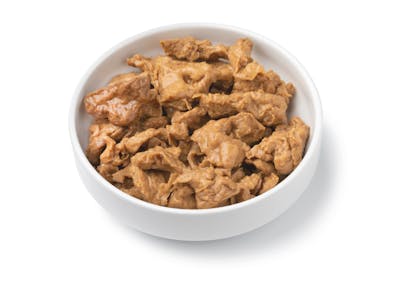

17 grams
3 grams
1 gram
89
77%
1.2

8. Turkey and cheese roll-ups
Pros: nearly carb-free, minimal preparation needed
Cons: requires refrigeration; not for vegan or vegetarian diets
Deli meat with cheese is a quick, tasty snack with minimal carbs. However, many processed meats like salami and bologna don’t provide much protein per calorie. For a healthy weight loss snack, reach for better options like sliced turkey, roast beef, or lean ham.
To make a roll-up, place one slice of cheese on top of a slice of deli meat, roll up, and enjoy.
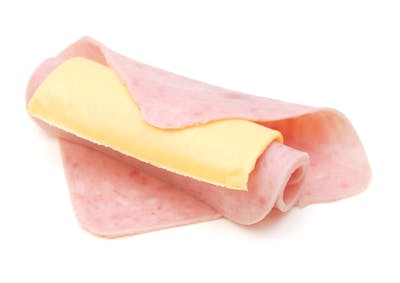

14 grams
0.5 grams
140
40%
2.3
9. Hard-boiled eggs
Pros: low in net carbs, no preparation or refrigeration needed
Cons: must be cooked in advance
Eggs are versatile, inexpensive, and packed with protein and other essential nutrients. In studies, eating eggs has been found to help people feel full and satisfied.17
Hard-boiled eggs make a great snack to eat at home or on the go. Boil them ahead of time and grab a couple when you need them. Just sprinkle with salt and pepper and dig in.
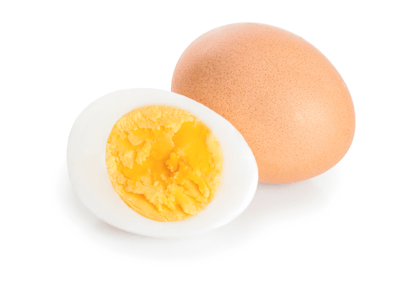

12 grams
1 gram
142
34%
1.4
10. Canned tuna
Pros: carb-free, very high protein percentage, no preparation needed
Cons: Due to high mercury content, limit to twice a week (once a week if you also eat tuna at meals); not for vegan or vegetarian diets
Tuna is a popular fish that provides a lot of protein per calorie. When canned, it makes a convenient, economical snack that’s ideal for healthy weight loss.
Like all canned fish, tuna is cooked, and you can eat it straight from the can or tin. Sprinkle it with salt, herbs, or even a little mayo if you don’t love it plain.
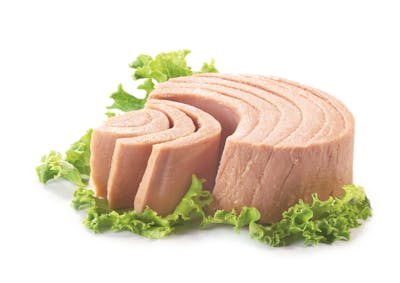

14 grams
0 grams
75
75%
1.2
11. Zero-sugar beef jerky
Pros: carb-free, very high protein percentage, no preparation required, no refrigeration required
Cons: Not for vegan and vegetarian diets
Beef jerky and dried meat sticks are excellent portable snacks. Although many brands are made with sugar, sugar-free versions exist. Choose beef jerky and meat sticks that provide at least 10 grams of protein per serving. Check nutrition labels for carb counts, especially if you follow a keto or low-carb diet.
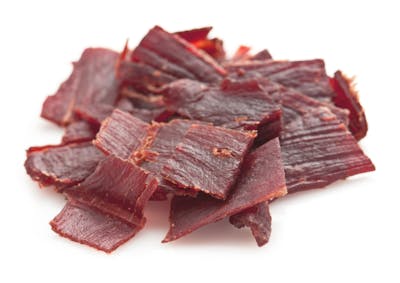

13 grams
< 1 gram
70
74%
2.3
12. Tempeh
Pros: high in fiber, low in net carbs
Cons: requires refrigeration and preparation
Soy products are a good source of high-quality plant protein. Some studies suggest that eating soy may help people lose weight.18
Tempeh is made from fermented soybeans that are pressed together in a block, which can be sliced like tofu. However, tempeh is firmer and has a lumpier texture than tofu because it contains soybeans that have been split rather than ground soybean curds.
Tempeh is prized for its nutty, earthy flavor. You’ll find it in the refrigerated section of most grocery stores, near the tofu. Steam or pan-fry tempeh straight from the package, or apply your favorite marinade or dry rub before cooking.


12 grams
4 grams
5 grams
120
40%
2.0
13. Cheese with cucumber slices
Pros: low in net carbs, minimal prep time
Cons: requires refrigeration
Cheese with sliced cucumber is a great healthy weight loss combo that can help tide you over to your next meal.
However, cheese is a food that can be tough to stop eating because it’s so tasty. So cut a slice for your snack and put the rest away to avoid going overboard.
Below, we’ve paired part-skim mozzarella cheese with cucumber to keep the protein percentage of this snack above 35%. Use full-fat cheese if you prefer.
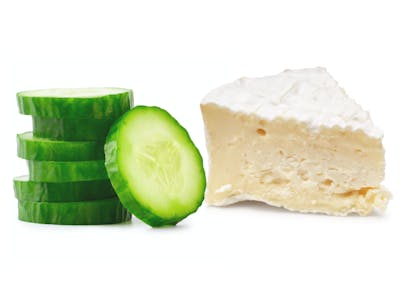

15 grams
4.5 grams
0.5 grams
160
38%
1
14. Nonfat Greek yogurt with chopped apple
Pros: very low energy density
Cons: too high in carbs for most low-carb diets; requires preparation and refrigeration
As described in snack #1, plain nonfat Greek yogurt provides a lot of protein per calorie. Why list it again here? Because when you pair it with chopped apple, you get a delicious, healthy weight loss snack that deserves its own spot.
Based on your preferences, feel free to replace the apple with an equal amount of berries, pear, or other fruit.
Although Greek yogurt with fruit is too high in carbs for keto and most low-carb diets, it can work well with most other dietary approaches.
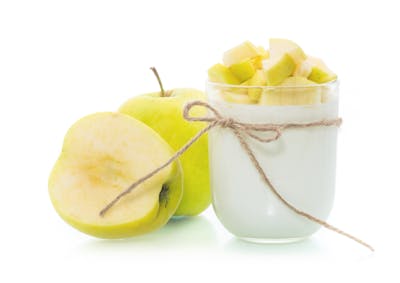

13 grams
15 grams
2.5 grams
112
46%
0.7
15. Lupini beans
Pros: low in net carbs, no preparation or refrigeration needed
Cons: May not be widely available in all areas
Italian lupini beans are similar to chickpeas (garbanzo beans) in taste and texture, but they’re shaped more like lima beans. Like all beans, lupini beans (lupins) provide protein and fiber. However, because lupins are also low in net carbs, they’re a good snack for most diets.
They’re usually pickled in brine, which gives them a salty, tangy taste. Lupini beans come ready to eat in jars and convenient snack pouches.
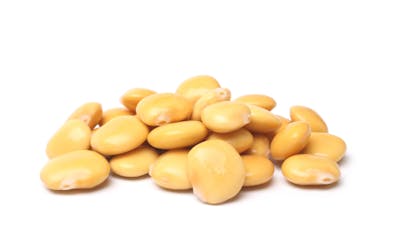

13 grams
5 grams
2.5 grams
95
55%
1.1

Summary
In some cases, the best snack may be no snack. If you’re not hungry, there’s no need to eat in between meals — especially if you want to lose weight.
But if you are hungry and feel as though you need a snack, make sure to choose one that maximizes satiety per calorie, fits your dietary approach, and works well with your lifestyle.
The 15 best healthy snacks for weight loss - the evidence
This guide is written by Franziska Spritzler, RD and was last updated on June 19, 2025. It was medically reviewed by Dr. Bret Scher, MD on October 27, 2021.
The guide contains scientific references. You can find these in the notes throughout the text, and click the links to read the peer-reviewed scientific papers. When appropriate we include a grading of the strength of the evidence, with a link to our policy on this. Our evidence-based guides are updated at least once per year to reflect and reference the latest science on the topic.
All our evidence-based health guides are written or reviewed by medical doctors who are experts on the topic. To stay unbiased we show no ads, sell no physical products, and take no money from the industry. We're fully funded by the people, via an optional membership. Most information at Diet Doctor is free forever.
Read more about our policies and work with evidence-based guides, nutritional controversies, our editorial team, and our medical review board.
Should you find any inaccuracy in this guide, please email andreas@dietdoctor.com.
The following two trials suggest people lose similar weight whether they snack or not:
The British Journal of Nutrition 2010: Should snacks be recommended in obesity treatment? A 1-year randomized clinical trial [moderate evidence]
The British Journal of Nutrition 2010:Increased meal frequency does not promote greater weight loss in subjects who were prescribed an 8-week equi-energetic energy-restricted diet
[randomized trial; moderate evidence]In one study, eating two times a day was found to be more effective for losing weight than eating six times a day:
Diabetologia 2014: Eating two larger meals a day (breakfast and lunch) is more effective than six smaller meals in a reduced-energy regimen for patients with type 2 diabetes: a randomised crossover study [moderate evidence] ↩
The Journal of Nutrition 2015: Consuming high-protein soy snacks affects appetite control, satiety, and diet quality in young people and influences select aspects of mood and cognition [randomized trial; moderate evidence]
The American Journal of Clinical Nutrition 2014: Snacks containing whey protein and polydextrose induce a sustained reduction in daily energy intake over 2 wk under free-living conditions [randomized trial; moderate evidence]
Nutrition Journal 2011: Chronologically scheduled snacking with high-protein products within the habitual diet in type-2 diabetes patients leads to a fat mass loss: a longitudinal study
[non-controlled study; weak evidence] ↩British Journal of Health Psychology 2012:The power of habits: unhealthy snacking behaviour is primarily predicted by habit strength
[prospective cohort study; weak evidence] ↩Essential nutrients are vital to health and must be obtained from your diet because your body can’t make them on its own. ↩
Journal of the American College of Nutrition 2004: The effects of high protein diets on thermogenesis, satiety and weight loss: a critical review [systematic review of randomized trials; strong evidence]
Nutrition Reviews 2016: Effects of dietary protein intake on body composition changes after weight loss in older adults: a systematic review and meta-analysis [systematic review of randomized trials; strong evidence]The American Journal of Clinical Nutrition 2013:Contribution of gastroenteropancreatic appetite hormones to protein-induced satiety [randomized trial; moderate evidence]
Nutrients 2018:Satiating effect of high protein diets on resistance-trained subjects in energy deficit [randomized trial; moderate evidence] ↩
Fiber isn’t included in the calorie count because it’s generally accepted that humans don’t produce the enzymes needed to break down fiber:
Gut Microbes 2017: Dietary fiber and prebiotics and the gastrointestinal microbiota [overview article; ungraded]Instead, fiber passes through your system until it reaches your colon, where it is either fermented by bacteria or eliminated, depending on the type:
International Journal of Molecular Sciences 2017: Gut fermentation of dietary fibres: physico-chemistry of plant cell walls and implications for health [overview article; ungraded] ↩
Foods contain both soluble and insoluble fiber. The majority of dietary fiber is insoluble fiber, which provides zero calories per gram. Soluble fiber is believed to provide roughly 1 to 2 calories per gram as a result of being fermented into short-chain fatty acids in the colon:
Journal of Nutrition and Metabolism 2019: The role of fiber in energy balance [overview article; ungraded] ↩In short-term trials, overweight and lean women ended up eating fewer calories when they were allowed as much food as they wanted at low-energy-density meals compared to high-energy-density meals – even though they reported having similar hunger and fullness levels after all meals:
The American Journal of Clinical Nutrition 1998:Energy density of foods affects energy intake in normal-weight women [randomized trial; moderate evidence]
The American Journal of Clinical Nutrition 2001:Energy density of foods affects energy intake across multiple levels of fat content in lean and obese women [randomized trial; moderate evidence]
In a one-year trial, overweight women who cut back on fat and increased the amount of foods with low energy density in their diet lost more weight than women who simply cut back on fat, even though both groups were allowed to eat as much as they wanted:
The American Journal of Clinical Nutrition 2007:Dietary energy density in the treatment of obesity: a year-long trial comparing 2 weight-loss diets [randomized trial; moderate evidence]
In a small study of 10 overweight and 10 normal weight adults, on average, participants took in only half as many calories when they ate mostly low-energy density foods (vegetables, dried beans, fruits, and lean meats) compared to mostly foods with high energy density (fattier meats and sweets) for five days:The American Journal of Clinical Nutrition 2001:Energy density of foods affects energy intake across multiple levels of fat content in lean and obese women [randomized trial; moderate evidence] ↩
Obesity Reviews 2011: Effects of dietary fibre on subjective appetite, energy intake and body weight: a systematic review of randomized controlled trials [systematic review of randomized trials; strong evidence]
International Journal of Obesity 2014: Satiety and energy intake after single and repeated exposure to gel-forming dietary fiber: post-ingestive effects [randomized trial; moderate evidence]
Nutrition 2018: A nonrestrictive, weight loss diet focused on fiber and lean protein increase [non-controlled study; weak evidence]The Journal of Nutrition 1997: Dietary fiber decreases the metabolizable energy content and nutrient digestibility of mixed diets fed to humans [randomized trial; moderate evidence] ↩
We obtained nutrition information from FoodData Central, the USDA’s nutrient profile database. These are based on average values. Protein, carbs, and fiber can vary among foods and brands. ↩
Digestible carbs (total carbs minus any fiber) are also referred to as net carbs ↩
The Journal of Nutrition 2011: Increased consumption of dairy foods and protein during diet- and exercise-induced weight loss promotes fat mass loss and lean mass gain in overweight and obese premenopausal women [randomized trial; moderate evidence]
Obesity Research 2004: Calcium and dairy acceleration of weight and fat loss during energy restriction in obese adults [randomized trial; moderate evidence] ↩
One review of 21 trials found that people who included beans, lentils, and other legumes in their diet lost a small amount of weight without deliberately restricting calories:
The American Journal of Clinical Nutrition 2014: Effects of dietary pulse consumption on body weight: a systematic review and meta-analysis of randomized controlled trials [strong evidence] ↩
British Journal of Nutrition 2012: Dietary inclusion of salmon, herring and pompano as oily fish reduces CVD risk markers in dyslipidemic middle-aged and elderly Chinese women [randomized trial; moderate evidence]
Nutrition Research 2010: Inclusion of Atlantic salmon in the Chinese diet reduces cardiovascular disease risk markers in dyslipidemic adult men [randomized trial; moderate evidence] ↩
Soy provides all nine essential amino acids in amounts comparable to the milk proteins casein and whey. Your body also digests and absorbs soy protein efficiently:
Nutrients 2020: Plant proteins: Assessing their nutritional quality and effects on health and physical function [review article; ungraded] ↩
Using strawberries will give your snack a similar nutrition profile with a little less fiber. If you use blueberries, you’ll get less fiber and about 3 more net carbs than other berries. ↩
Nutrients 2017: Consuming two eggs per day, as compared to an oatmeal breakfast, decreases plasma ghrelin while maintaining the LDL/HDL ratio [randomized trial; moderate evidence]
International Journal of Food Sciences and Nutrition 2011: The effects of consuming eggs for lunch on satiety and subsequent food intake [randomized trial; moderate evidence] ↩
Nutrients 2019: Soy products ameliorate obesity-related anthropometric indicators in overweight or obese Asian and non-menopausal women: a meta-analysis of randomized controlled trials [strong evidence] ↩



